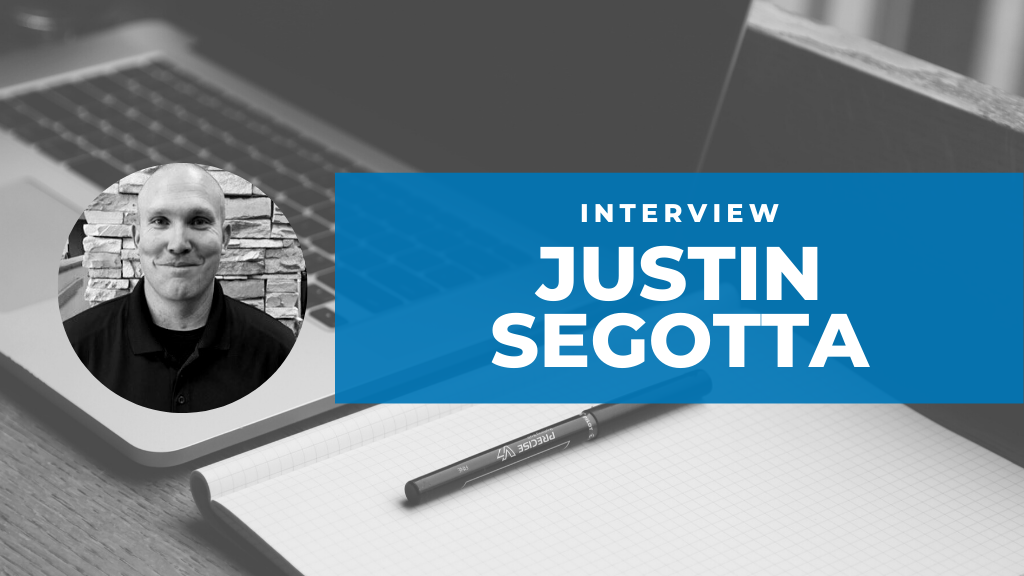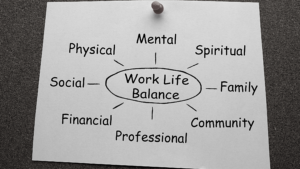For the third installment of our “Non-Traditional AT” series, we introduce to you Justin Segotta! Read on for his story of how getting involved, knowing your why and creating opportunity is vital to your satisfaction and success.

Q: What personal experiences or life events sparked your unique practice or role in athletic training? What professional experiences led you to this place?
A: When I started my career in athletic training I didn’t really know anything but the traditional setting. I had a very well-rounded student experience in my opinion, which included time in a clinic, time in a physician’s office, time in the secondary school setting, and time in the collegiate setting. During my time working at a school in Aztec, NM I began working on my master’s degree through Fresno Pacific. This program really helped change my way of thinking and I soon realized that I did not have to take the traditional route to be a successful athletic trainer. I was able to learn from instructors that were employed in traditional settings, educators, and ATs that were employed in the clinical, hospital, and other non-traditional settings. I realized that I wanted to be an advocate for the profession, I wanted to be more involved, and I wanted to make a difference. I didn’t necessarily want to just go through the motions with my career. I greatly enjoyed my time in the secondary school setting, and from time to time I miss it, but moving gave me the opportunity to do more.
Upon moving to the Phoenix area I began serving as the PR chair for the RMATA, and also accepted a new position as an athletic trainer in the clinical setting. I soon realized the difference that I could make for our small clinic. We were immediately able to increase patient volume, which in turn led to increased revenue. When I started there were two full-time ATs employed by the company. Soon after our company made the decision to pair up a PT and an AT together. Our company took the approach that we could provide a better healthcare model by transitioning away from the traditional “tech” position and employing ATs. Currently, our company employs 7 PTs and 6 ATs across three clinics.
Q: What space do you currently fill in the AT profession?
A: I am currently the clinical director of Swing Orthopedic and Sports Physical Therapy in Surprise, AZ. I feel our approach as a company gives our patients a more well-rounded rehabilitation experience. We also provide outreach coverage to schools that may not otherwise be able to afford coverage. I am also the RMATA PR chair as well as the D7 rep to the NATA PR Committee.

Q: What is your WHY? What keeps you going when things get hard?
A: My career has been a journey that is not even close to being completed. There are several things that motivate me when things get hard or frustrating. First and foremost, I have a wife and two young children that are my number one motivation to keep pushing forward. The other motivation that I have is seeing the difference our athletic trainers make each and every day. We are able to give a quality healthcare experience because of our model. It is a model that is not seen in many clinical settings. Our ATs also make a valuable impact on our company. Because of the model we are using we have been able to grow and expand as a company. Working with ATs that truly care about the patient and the profession is a motivator that is hard to replace. Having peers that share the same drive as I do helps motivate me to do more and work harder to improve the profession.
Q: What piece of advice would you give to prospective ATs looking to influence or evolve the AT profession?
A: The first thing that I would recommend is to get involved. Find a way to get involved locally, or through your state, district, or national organizations. This is the best way to have a voice and help shape the future of the profession. When I really realized what I wanted to do with my career is when I became involved. The networking opportunities and the learning that takes place when you are involved is one of the most valuable things that athletic trainers can take away from these experiences. Another piece of advice is to become a lifetime learner. I know that as an AT we all have CEU requirements, but find things that spark an interest in you and help you grow as a professional. It is easy to just go through motions so that you have the requirements needed. Seek out courses and other opportunities that spark an interest and help make you a more well-rounded professional. One of the best examples that I have gone through is my Master’s program as well as being a part of the Innovate AT program that Adam Helparn and David Gallegos have worked on. Going to the first symposium and being a part of the Facebook group has given me the opportunity to see things through a different set of eyes, but most importantly I get to see the struggles and solutions that ATs have in a wide variety of professional settings.
Q: Has your view on the AT industry evolved since pursuing a non-traditional avenue? If so, how?
A: There have been some changes in how I view the AT industry. I think that biggest thing for me is that for ATs to be considered successful or to be considered to be making a difference they do not have to necessarily work in the “traditional setting.” I think so many times ATs think that they have to work in the traditional setting to be viewed as a “true” AT and someone that can make a difference. I think that as the profession has continued to grow there are more opportunities that ATs can and should explore. I know plenty of ATs that have made huge impacts in the traditional settings and have found that this is where they want to be and where they get the most satisfaction. There are some, though, that find the traditional setting is not for them. Instead of leaving the profession, like so many have, they need to branch off and find their ways through non-traditional routes. There are so many people and networks that these individuals can turn to that were not around just a few years ago. ATs need to use these opportunities to ensure that they are getting the most satisfaction out of the chosen setting.
Q: What gave you the confidence to go against the grain and take an innovative approach to serving the AT profession?
A: I think the biggest thing that gave me the confidence to go against the grain was getting involved. As soon as I got involved in the state, district, and national organizations I was able to see a number of ATs that have done so much for the profession and have gone against the grain their entire career. I have been able to lean on those individuals and gain so much insight from these ATs. The networking opportunities that are available when you are involved are endless and should be used. I also had to just go and do it. I know moving into a non-traditional setting is not always the most popular thing amongst ATs, but I had to look at was best for my family and myself and move forward with it.
Q: If you could do it all over again, what would you do differently?
A: I honestly do not think that I would change anything if I was given the opportunity to do all this again. The experiences that I have gained have been priceless and they have honestly made me who I am today. I am a big believer in learning from previous experiences and building upon those. I think experiences make the person and help them attain their goals.

Rapid Fire:
Q: What are 1-3 books that have greatly influenced your personal and/or professional life?
A: Strengths Finder 2.0 by Tom Rath, Chop Wood, Carry Water by Joshua Medcalf, & Who Moved My Cheese? by Spencer Johnson.
Q: What is one the best or most worthwhile investments you’ve made that has positively impacted your life?
A: The biggest investment that has positively impacted my life is going back and getting my Master’s degree and broadening my view of the profession. Also, I constantly strive to find CEU opportunities that strike an interest and will help me professionally.
Q: What is one habit or behavior that has most improved your life?
A: Honestly the one behavior that has most improved my life is living in the now. I used to be horrible about putting things off. I do my best to not put things off. I find that I am able to much better manage my time and even find time do things when I take the initiative and get things done in an appropriate amount of time. I also make time for myself. This can be leisure activities or find time to read and learn. I am much more focused and ready to go when I make sure that I find time for me.
Q: Favorite App to help keep you organized?
A: iCalendar and notepad on iPhone
Q: Favorite quote to keep you motivated?
A: Philippians 4:13 I can do all things through Christ who gives me strength.
Q: Favorite activity to spark creativity and ideas?
A: When I work out and I am running, biking or swimming is when I am able to clear my head and think about the ways that I want to change things or things that need to be done.
If you would like to get in touch with Justin, you can contact him at [email protected]







